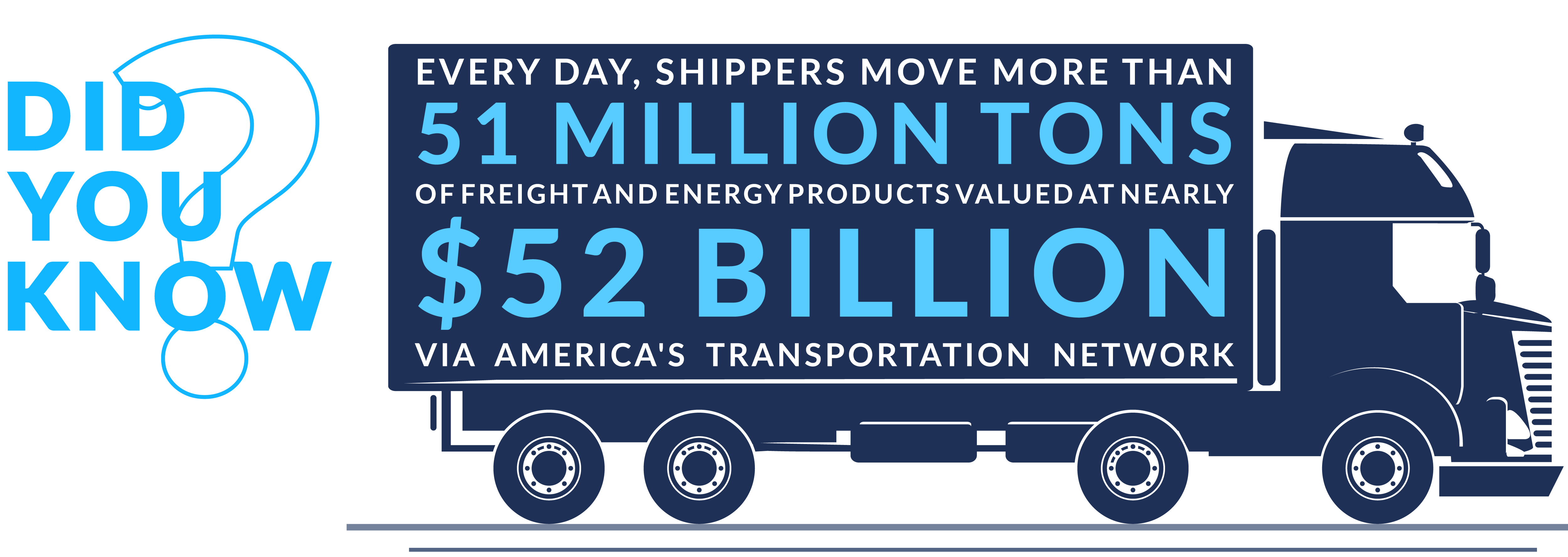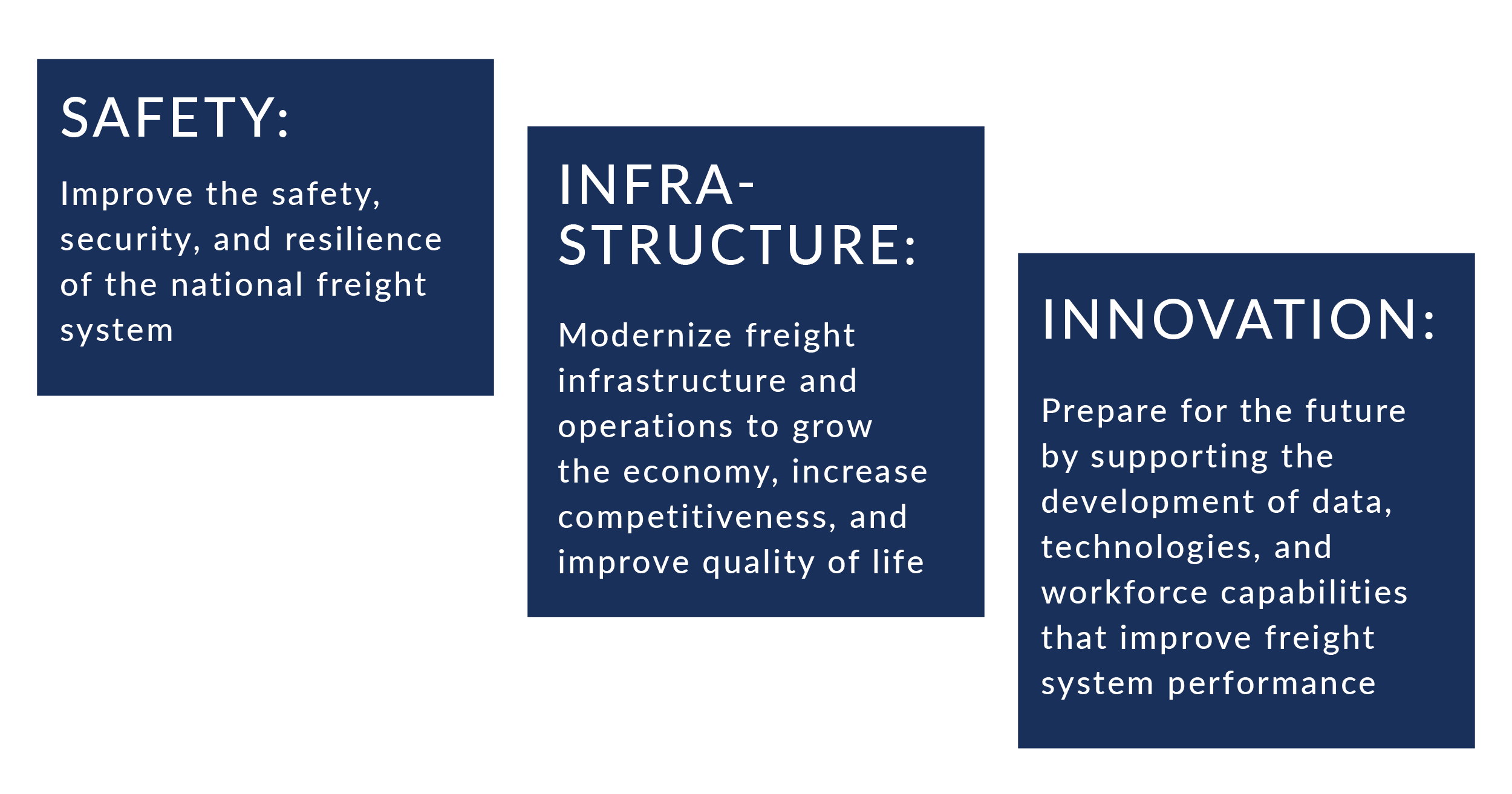National Freight Strategic Plan Recap
In preparation for expiration of the FAST (Fixing America’s Surface Transportation) Act at the end of September, the U.S. Department of Transportation (USDOT) announced the National Freight Strategic Plan (NFSP).
This Plan meets the requirement of the FAST Act to develop a strategic plan to implement the goals of the new National Multimodal Freight Policy and is a significant initiative that is meant to benefit shippers by delivering more affordable, efficient, and reliable options to move cargo.

As we continue to see growth in freight demand, this new plan lays out a strategy for long-term investments in infrastructure, the workforce, and other essential parts of the freight system. The USDOT developed this plan through extensive consultation with freight stakeholders in both the public and private sectors. The NSFP will guide national freight policy, programs, initiatives, investments, and identify freight data and research needs.
The NFSP’s strategy for federal involvement in freight policy focus on improving cross-sector, multi-jurisdictional, and multi-modal collaboration and providing targeted federal resources and financial assistance to support freight projects that provide significant benefits to the national economy — and, of course, to shippers.
The DOT said this plan is the first of its kind and is focused bolstering the nation’s economic competitiveness through long-term investments in infrastructure, the workforce, and other key parts of the national freight system.
“This plan establishes a clear vision for the future of our nation’s freight transportation system, and it outlines how the United States can maintain our competitive edge across major industries like agriculture, manufacturing, energy production and e-commerce,” said DOT Secretary Elaine Chao in a video. “Our current freight system faces significant challenges. The rise of e-commerce has disrupted supply chains and increased demand for last-mile deliveries in areas that are already heavily congested. And the U.S. has become a net energy exporter, for the first time in decades. And this has far reaching multimodal implications. In addition, innovative technologies have the potential to disrupt our transportation network even further, from automated delivery vehicles on our roads and highways to drones in our skies fulfilling some of these last mile deliveries.”
“The country’s economic security depends upon ensuring that its roads and highways, railroads, maritime systems, and pipelines can adapt to innovative technologies and changing freight demand, which requires leadership at all levels of government. This National Freight Strategic Plan (NFSP) will help the country invest strategically into its future and turn these challenges into opportunities,” Chao said.
The NFSP outlined four principles that will be used to guide the USDOT’s strategic leadership to support safe, efficient, and reliable goods movement…
- Modernizing or eliminating unnecessary or duplicative regulations that inhibit supply chain efficiency, reduce incentives to innovation, delay project delivery, or raise costs to shippers and consumers, while protecting safety and environmental outcomes
- Improving cross-sector, multijurisdictional, and multimodal collaboration to enhance intermodal connectivity and first- and last-mile connections, streamline interstate policies and regulations, and support multi-state investment
- Providing targeted Federal resources and financial assistance to support freight projects that provide significant benefits to the national economy
- Investing in freight data, analytical tools, and research to enhance the abilities of State, regional, and local agencies to evaluate and address freight issues
What’s more, the NSFP also focuses on national freight policy strategic goals and objectives with a key emphasis on safety, infrastructure, and innovation.

“I am happy the plan was released, and that it is a serious effort to understand and put a framework in place to better understand freight and put emphasis on programs and data that will allow us to make better investment decisions.” Said Randy Mullett, principal of Mullett Strategies. “Continuing to highlight the importance of freight will only help to make the U.S. freight system more effective and help U.S. consumers, manufacturers, farmers, etc. compete internationally and continue to have low logistics costs, fast transit times, and many options. I was somewhat disappointed there were not more specific policy recommendations but this is a great first step.”

